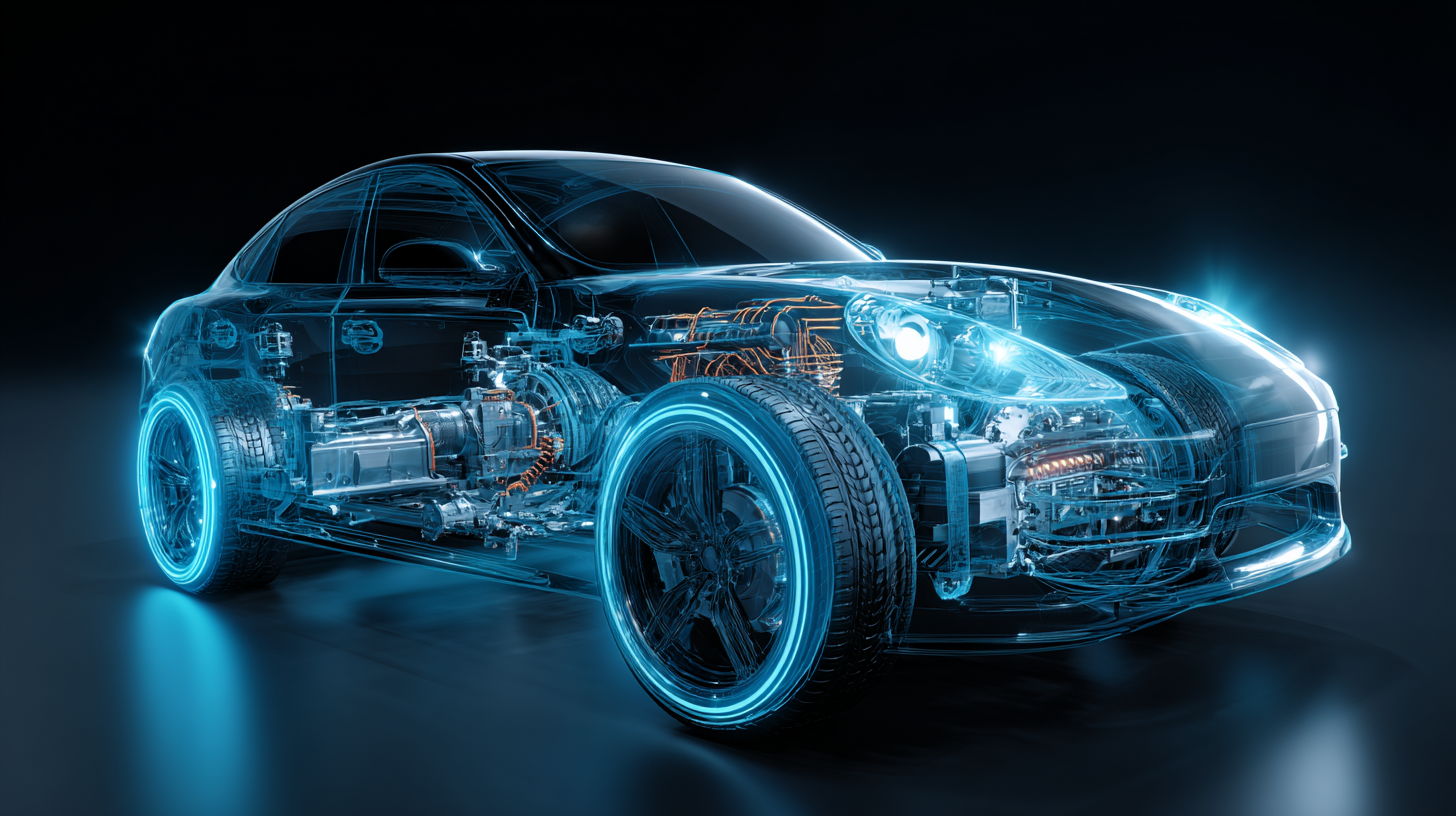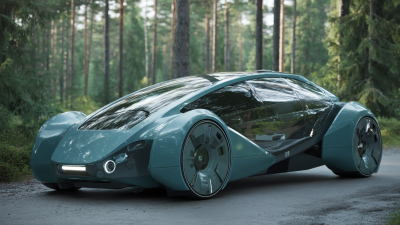Blog
Exploring the Future of Auto Parts Innovation in Electric Vehicle Technology
The automotive industry is undergoing a significant transformation as electric vehicles (EVs) become increasingly prevalent. With the rise of EV technology, innovation in auto parts is more critical than ever. A recent report by McKinsey & Company forecasts that the global electric vehicle market could reach 60 million units by 2030, indicating a massive shift in consumer preferences and demand for advanced auto parts designed specifically for electric vehicles. This transition presents both challenges and opportunities for manufacturers and suppliers in the auto parts industry.

As we delve into the future of auto parts innovation, it's essential to recognize the insights of industry experts. According to Dr. Emily Johnson, a leading automotive analyst at the Center for Automotive Research, "The evolution of auto parts in electric vehicle technology is not just about keeping pace with trends; it's about reimagining the entire supply chain to improve efficiency and sustainability." Her remarks underscore the necessity for stakeholders in the auto parts sector to innovate and adapt to the unique requirements of electric vehicles, ensuring that they remain competitive in a rapidly changing landscape.
In conclusion, the exploration of auto parts innovation in electric vehicle technology is critical for manufacturers aiming to thrive in this emerging market. By embracing new ideas and leveraging industry expertise, the auto parts sector can position itself at the forefront of the electric vehicle revolution, paving the way for a sustainable automotive future.
Innovations in Battery Technology and Their Impact on Auto Parts Design
The rapid evolution of electric vehicle (EV) technology is fundamentally transforming the auto parts industry, particularly in the realm of battery technology. Innovations such as the new single-crystal battery design promise significant advancements, enabling electric vehicles to operate for up to 1 million kilometers. This remarkable longevity not only enhances the usability of EVs but also plays a crucial role in reducing waste and minimizing environmental impact. As the automotive sector shifts towards sustainability, these developments are pivotal in ensuring that auto parts can support the longevity and efficiency demanded by modern vehicles.

Moreover, collaborative projects like Project Arrow 2.0 demonstrate the industry's commitment to innovation. By pooling resources from various automotive leaders, this initiative aims to produce Canada's first homegrown zero-emission vehicle. In parallel, the ALIVE collaboration addresses challenges in EV battery enclosure design, which is key to reducing supply chain risks and lowering costs. As manufacturers adapt to these new technologies, the auto parts market is expected to see significant growth, with projections indicating a rise from USD 701.57 billion in 2024 to USD 1,195.4 billion by 2032. This surge underscores the importance of battery technology innovations and their monumental impact on auto parts design in the years to come.
The Role of Lightweight Materials in Enhancing Electric Vehicle Performance
The integration of lightweight materials into electric vehicle (EV) design is revolutionizing the automotive industry. According to a report by the International Council on Clean Transportation (ICCT), reducing vehicle weight by 10% can enhance energy efficiency by approximately 6-8%. This is especially significant for electric vehicles, where every kilogram saved translates directly to improved range and performance. Lightweight materials, such as carbon fiber and advanced aluminum alloys, are becoming increasingly prevalent in EV manufacturing, enabling manufacturers to optimize battery performance while maintaining structural integrity.
As the demand for longer-range electric vehicles grows, the focus on material innovation intensifies. The Research and Markets report predicts that the global lightweight materials market in the automotive sector will reach $170 billion by 2025, aligning with the projected increase in EV production. By employing materials that not only reduce weight but also offer better energy absorption characteristics, manufacturers can create vehicles that not only drive further on a single charge but also enhance safety and durability. As automotive technology advances, the role of lightweight materials will be crucial in shaping the future of electric vehicle performance.
Exploring the Future of Auto Parts Innovation in Electric Vehicle Technology
| Material Type | Density (g/cm³) | Tensile Strength (MPa) | Estimated Cost ($/kg) | Application in EVs |
|---|---|---|---|---|
| Aluminum Alloys | 2.7 | 300 | 3.00 | Chassis, Body Panels |
| Carbon Fiber Reinforced Polymer | 1.6 | 500 | 15.00 | Body Shells, Structural Components |
| Magnesium Alloys | 1.8 | 200 | 4.00 | Transmission Housings, Wheels |
| Titanium Alloys | 4.5 | 900 | 30.00 | High-Performance Components |
| Thermoplastic Composites | 1.2 | 150 | 5.00 | Interior Trim, Battery Enclosures |
Emerging Trends in Electric Vehicle Charging Infrastructure and Auto Parts
The evolution of electric vehicles (EVs) has spurred remarkable advancements in auto parts and charging infrastructure. According to a recent report by the International Energy Agency (IEA), the global EV stock reached 10 million units in 2020, a figure projected to reach 145 million by 2030. This exponential growth has prompted suppliers to innovate in battery technology, lightweight materials, and smart components, essential for maximizing vehicle efficiency and performance.
Investments in charging infrastructure are parallelly increasing, with BloombergNEF forecasting that global charging point installations will exceed 5 million by 2025. This trend reflects a growing commitment to accessibility and convenience for EV users. Fast-charging technologies, such as ultra-rapid chargers, are being prioritized to reduce charging times significantly and enhance user experience.
Tip: When considering the adoption of electric vehicles, assess the availability of charging stations in your area. Understanding local infrastructure can greatly influence your EV ownership experience.
Tip: Keep an eye on battery advancements; innovations like solid-state batteries promise to increase range and reduce charging times, making future EVs more appealing.
Integration of Smart Technologies in Electric Vehicle Components
The integration of smart technologies into electric vehicle (EV) components is revolutionizing the automotive industry, driving innovations in performance and efficiency. This shift is underscored by the booming automotive bushing market, which is projected to expand significantly, impacted by advancements in various applications such as suspension, engine, and chassis systems. According to industry analysis, the automotive bushing market is becoming increasingly vital for improving vehicle dynamics and enhancing driver experience.
As consumers demand more advanced functionalities, industry players must adapt by incorporating smart technologies into their product offerings. In particular, the fusion of high-pressure systems within EV technology is gaining traction. A recent forecast indicates that the hybrid hydrogen electric powertrain market will reach a valuation of approximately $283.8 million by 2024, with a compound annual growth rate of 14.5% anticipated from 2025 to 2034. This growth is largely driven by a global shift towards sustainable and efficient automotive solutions.
**Tips:** Brands looking to stay competitive should focus on integrating innovative technologies into their products and leveraging market data to identify opportunities for growth in emerging segments. Continuous investment in research and development will also be crucial for remaining at the forefront of the evolving automotive landscape.
Future of Auto Parts Innovation in Electric Vehicle Technology
This chart illustrates the projected investments in various innovative technologies within the electric vehicle sector, highlighting key areas such as battery technology and smart sensors that are crucial for the advancement of electric vehicles.
Challenges and Opportunities in Sustainable Auto Parts Manufacturing for EVs
As the electric vehicle (EV) market continues to expand, manufacturers face the dual challenge of keeping pace with innovation while addressing sustainability concerns in auto parts production. The transition to electric vehicles opens avenues for eco-friendly materials and processes, yet poses questions about the lifecycle impact of these components. Companies must navigate regulations and market expectations, finding ways to integrate renewable resources and reduce waste without compromising performance or safety.
Tip: To enhance sustainability, consider adopting a circular economy approach. This means designing auto parts that can be easily disassembled and recycled, focusing on materials that minimize environmental impact.

Tip: Invest in training and upskilling your workforce on sustainable practices and new materials. This will empower your team to contribute effectively to innovation and adapt to the rapidly changing landscape of EV technology.
Related Posts
-

Understanding the Essential Role of Auto Parts in Vehicle Performance and Safety
-

Understanding the Impact of Quality Car Auto Parts on Vehicle Performance and Safety
-

Finding the Right Parts for My Car to Ensure Optimal Performance and Safety
-

The Future of Eco Cars Exploring Sustainable Innovations for a Greener Planet
-

Unlocking Sustainability: How Car Recycling Parts Contribute to a Greener Future
-

Exploring the Evolution of Automotive Body Parts: From Classic Designs to Modern Innovations
Logel’s Auto Parts
116 Bridge St East
Kitchener, Ontario
N2K 1J6
Phone: 519-745-4751
Toll Free: 1-800-818-9118
Hours 8:00-5:00 Monday to Friday
At Logel’s Auto Parts, we serve a range of communities in Southern Ontario, including:



